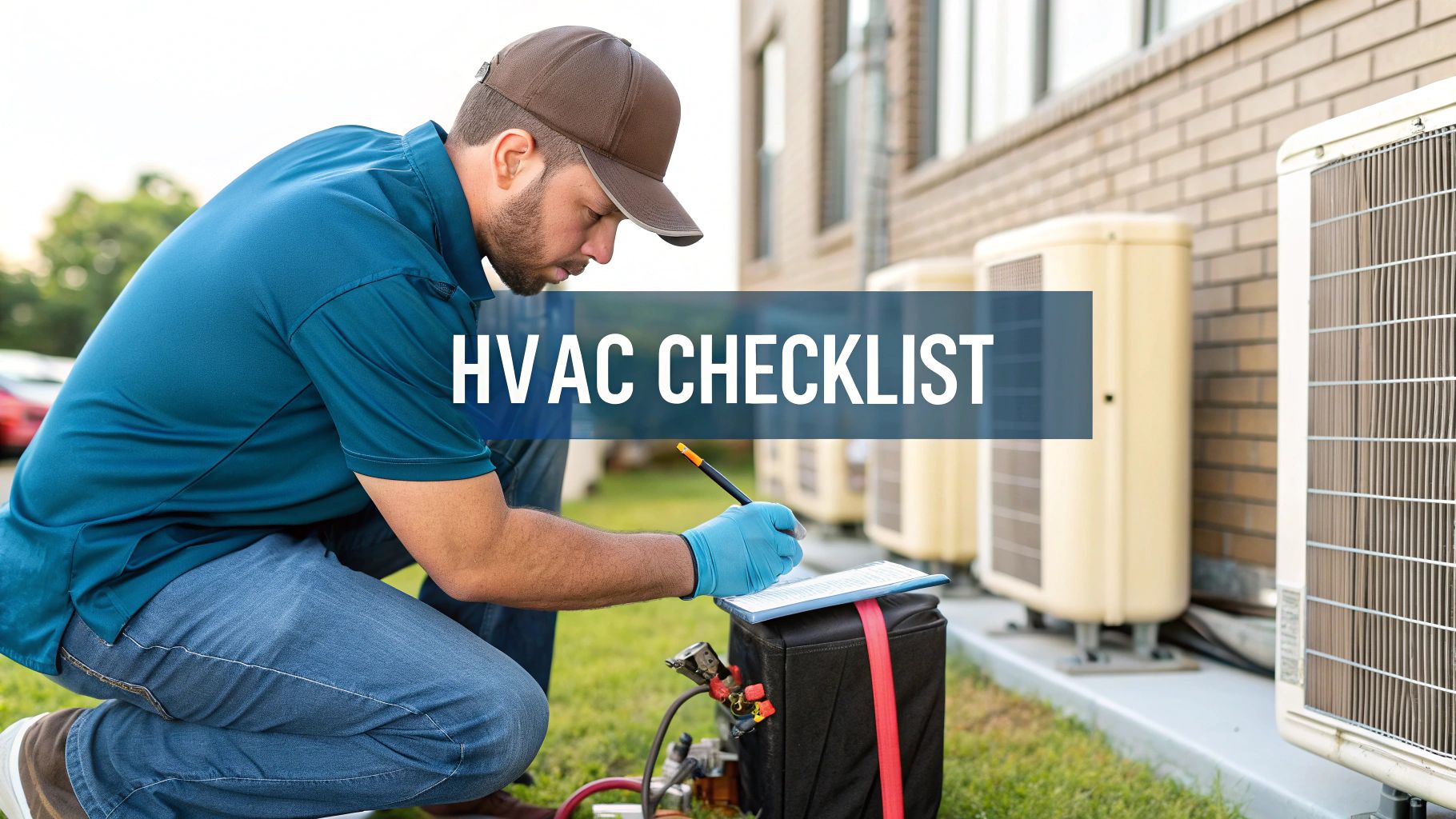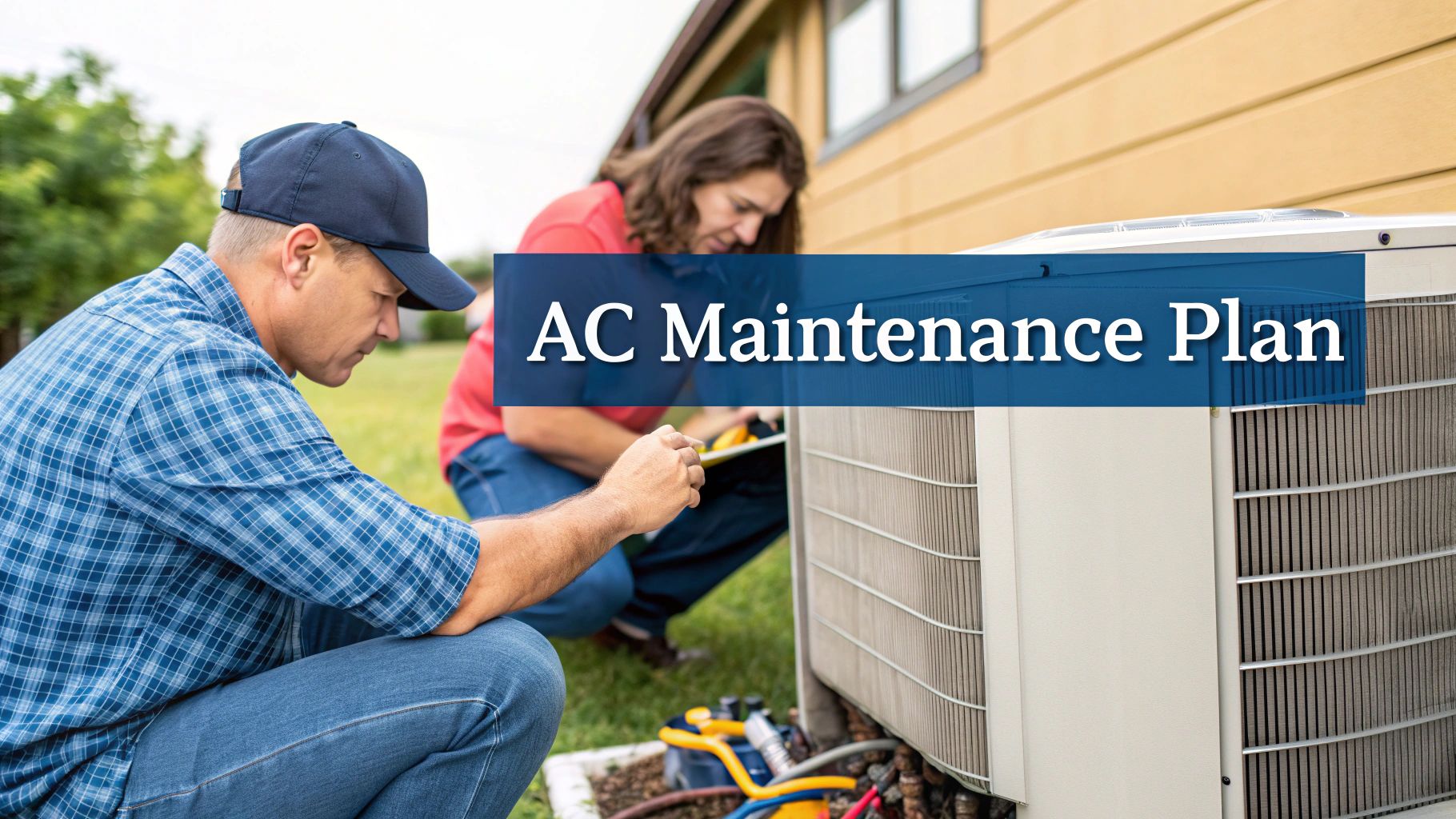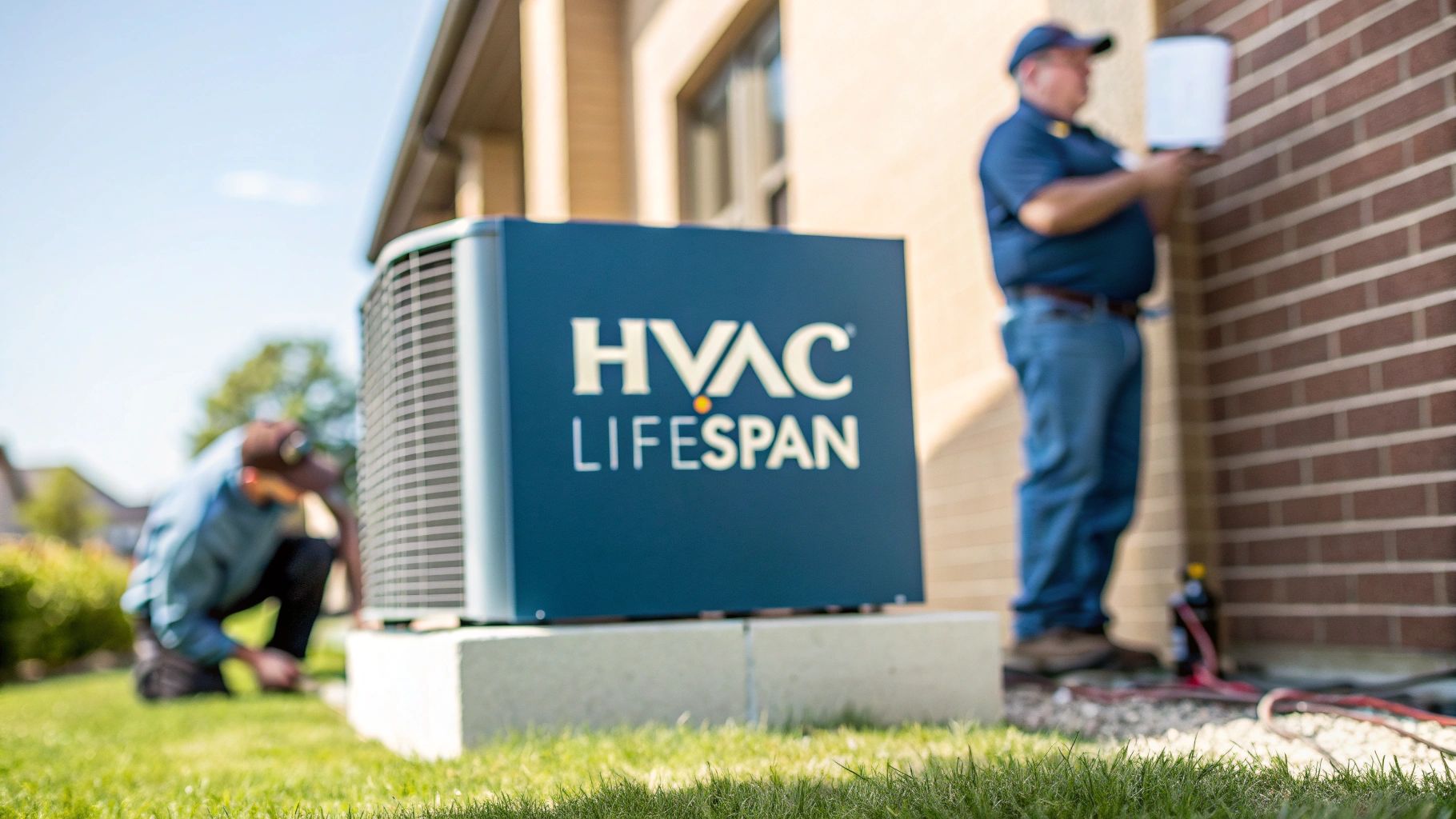In the demanding Florida climate, your HVAC system isn't just a luxury; it's a critical component of your home's comfort and your business's operation. Ignoring it until something breaks is a recipe for high energy bills, unexpected repair costs, and uncomfortable downtime. A proactive approach is key, and that starts with a structured plan.
This comprehensive hvac preventive maintenance checklist breaks down the essential tasks by frequency, providing a clear roadmap to extend your system's lifespan, boost efficiency, and ensure reliable performance year-round. For property managers and business owners, grasping the importance of a structured approach to property upkeep is paramount. Exploring a comprehensive commercial-grade maintenance checklist can provide valuable insights into ensuring all building systems, including HVAC, run efficiently and without interruption.
From simple monthly checks to in-depth annual inspections performed by professionals, we'll cover the 'what,' 'why,' and 'when' of proper HVAC care. Following this guide turns routine tasks into powerful investments. Let's dive into the essential checks that keep your system running smoothly, saving you money and stress in the long run.
1. Air Filter Replacement and Inspection
The single most critical task on any HVAC preventive maintenance checklist is consistent air filter replacement and inspection. Your HVAC system's air filter acts as the first line of defense, capturing dust, pollen, pet dander, and other airborne particles before they can enter the system or your home's air supply. Ignoring this simple step forces your system to work harder, leading to higher energy bills and potential equipment failure.
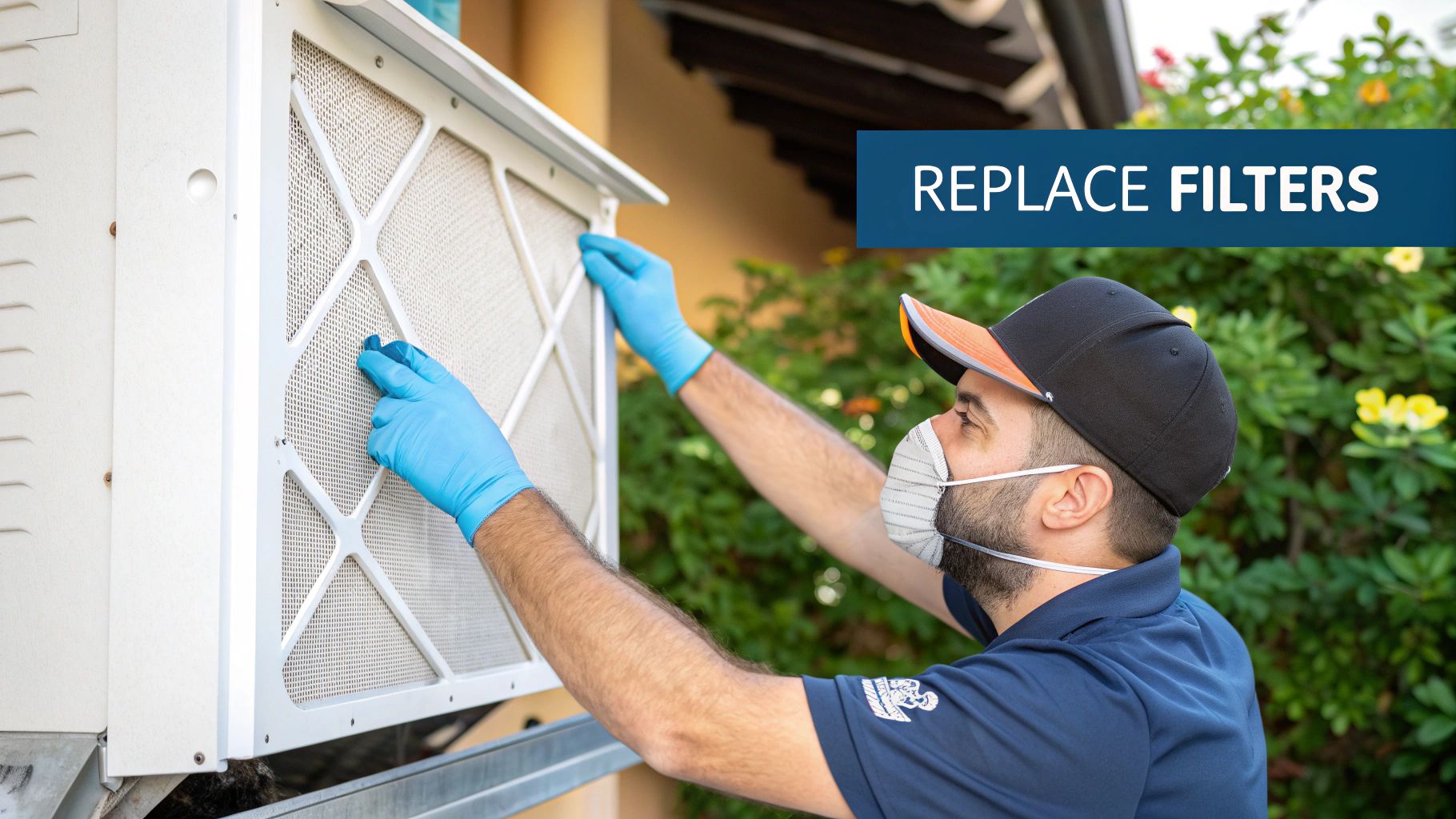
A dirty, clogged filter severely restricts airflow, which can cause the evaporator coil to freeze over in the summer or the heat exchanger to overheat in the winter. Both scenarios can result in costly repairs and significant downtime. Regular inspection and replacement ensure your system operates at peak efficiency, improves indoor air quality, and extends the lifespan of your entire HVAC unit.
Why It's a Top Priority
Neglecting the air filter is like trying to breathe through a cloth mask filled with dust; it's difficult and inefficient. For your HVAC system, this strain translates directly into higher energy consumption. The U.S. Department of Energy estimates that replacing a dirty filter with a clean one can lower your system’s energy consumption by up to 15%. This simple action is a cornerstone of any effective HVAC maintenance strategy.
Practical Tips for Filter Maintenance
To make filter maintenance a seamless part of your routine, consider these actionable steps:
- Set Reminders: Don't rely on memory alone. Set a recurring calendar alert or use a smart thermostat that sends replacement reminders based on actual system runtime, not just a fixed date.
- Keep Spares On Hand: Purchase filters in multi-packs and store them near your indoor air handler. This eliminates the delay and inconvenience of having to run to the store when a change is needed.
- Check Monthly: While most standard 1-inch filters need changing every 1-3 months, it's wise to visually inspect them monthly. If you have pets, live in a dusty area, or run your system frequently, you'll likely need to replace them more often. For a deeper dive into filter types, explore this guide to filters for air vents in your home.
- Document Everything: Keep a simple log of replacement dates. This helps you identify patterns and optimize your replacement schedule for your specific environment.
2. Coil Cleaning and Inspection
Following air filter maintenance, the next essential task in any comprehensive HVAC preventive maintenance checklist is cleaning and inspecting the evaporator and condenser coils. These coils are the heart of your system's heat exchange process. The indoor evaporator coil absorbs heat from your home's air, while the outdoor condenser coil releases that heat outside. When these coils are caked in dirt and grime, they cannot transfer heat effectively, forcing your system into overdrive.
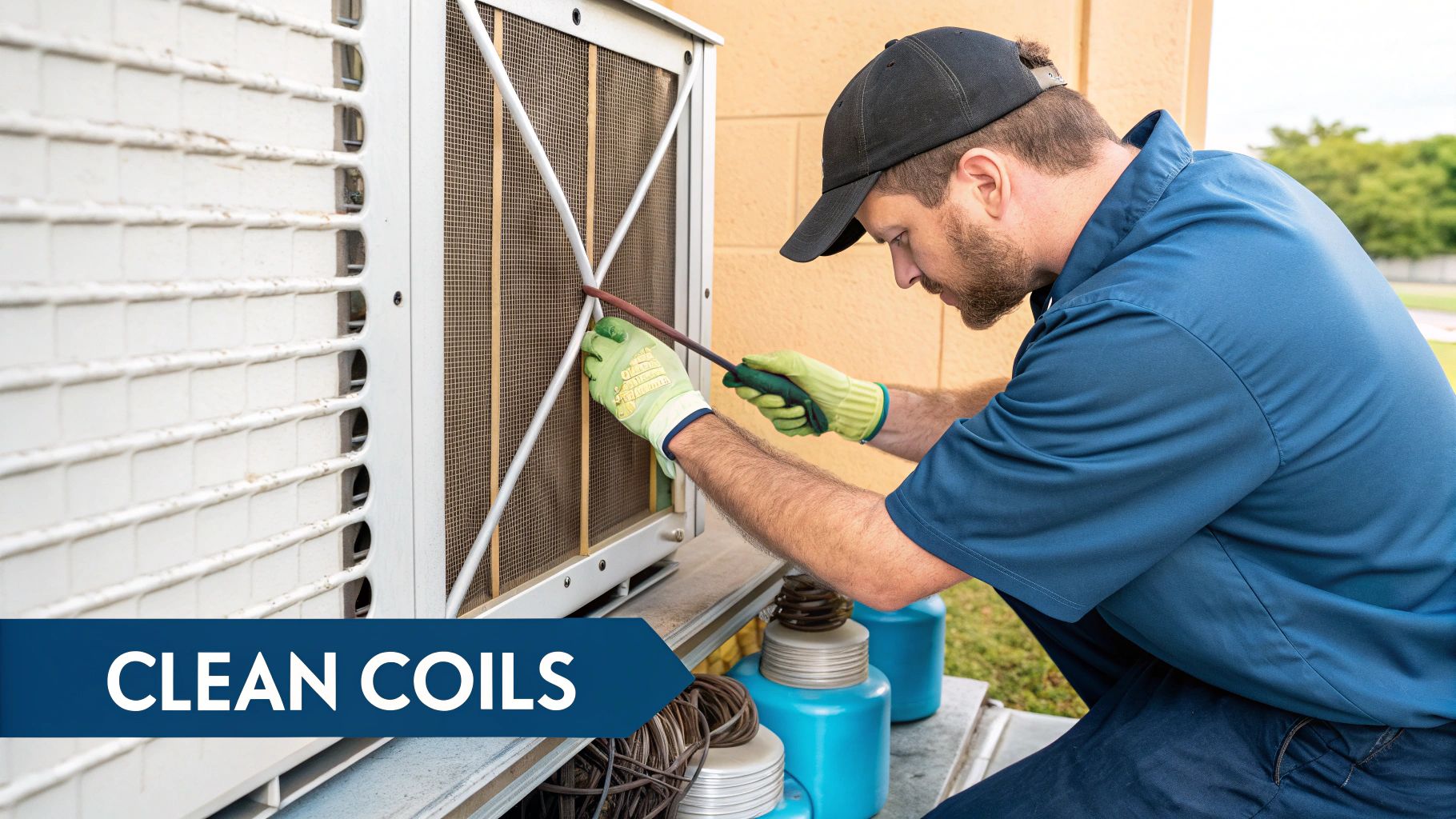
This layer of buildup acts as an insulator, drastically reducing efficiency and increasing energy consumption. A dirty condenser coil can raise compressor operating temperatures, leading to premature failure, while a dirty evaporator coil can restrict airflow, causing condensate to freeze and potentially leading to water damage. Regular cleaning restores your system's capacity, lowers utility bills, and prevents some of the most common and costly HVAC repairs.
Why It's a Top Priority
Neglecting your coils is like trying to cool a drink with a warm, insulated sleeve around it; the heat has nowhere to go. This inefficiency isn't just a minor issue. The Environmental Protection Agency (EPA) notes that even a thin layer of dirt on a condenser coil can increase electricity consumption by over 30%. For businesses, the impact is significant. Data centers use automated coil cleaning systems to maintain peak performance, and retail chains have reported efficiency improvements of up to 25% after implementing regular coil cleaning programs.
Practical Tips for Coil Maintenance
Proper coil maintenance requires care and the right approach to avoid damaging delicate components. Consider these actionable tips:
- Use the Right Cleaner: Not all cleaners are created equal. Use a foaming, no-rinse evaporator coil cleaner for indoor units and a specialized condenser coil cleaner for outdoor units. Avoid acidic or overly harsh chemicals that can corrode the aluminum and copper.
- Protect Electrical Parts: Before cleaning either coil, always shut off power to the unit at the breaker. When cleaning the outdoor unit, cover the fan motor and all electrical wiring with plastic to prevent water damage.
- Straighten Bent Fins: The delicate aluminum fins on coils can easily bend, restricting airflow. Use a fin comb, a specialized tool designed to gently straighten them without causing further damage.
- Schedule Professional Cleaning: While light cleaning can be a DIY task, deep cleaning, especially for the hard-to-reach evaporator coil, is best left to professionals. For a step-by-step breakdown, you can learn more about how to clean air conditioning coils on floridacoolinggroup.com.
3. Belt and Pulley System Maintenance
For many commercial and larger residential HVAC systems, the belt and pulley system is the critical link that transfers power from the motor to the fan. This system's health is paramount for proper airflow and overall unit performance. Regular inspection, adjustment, and replacement of these components are essential entries on any comprehensive HVAC preventive maintenance checklist to prevent unexpected failures and ensure efficient operation.
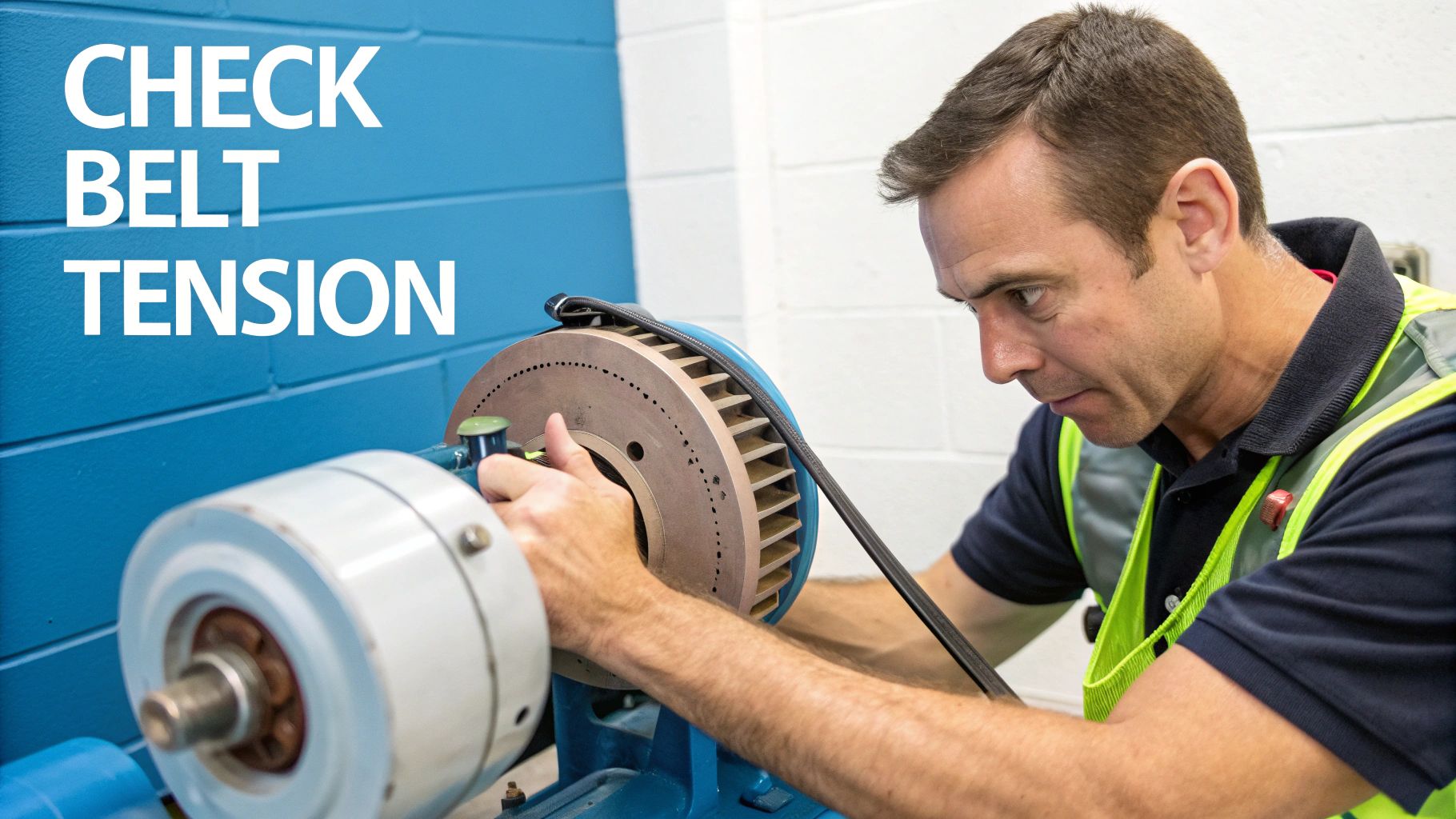
A worn, misaligned, or improperly tensioned belt forces the motor to work harder, leading to wasted energy, increased operational noise, and premature component failure. If a belt snaps, it can cause an immediate system shutdown and potential damage to surrounding parts. Consistent maintenance of the belt and pulley system ensures reliable power transmission, minimizes energy consumption, and prevents costly emergency repairs.
Why It's a Top Priority
An improperly maintained belt is a significant point of failure and inefficiency. A loose belt can slip, reducing fan speed and airflow, while a belt that is too tight places excessive strain on the motor and fan bearings, leading to premature wear. Proper belt tension and alignment are non-negotiable for achieving the system's designed performance and longevity, making this a crucial step in any professional HVAC service.
Practical Tips for Belt and Pulley Maintenance
To ensure your system's drive components are in optimal condition, integrate these professional techniques into your maintenance schedule:
- Use Proper Tools: Avoid estimating belt tension by feel. Use a dedicated belt tension gauge to ensure settings are accurate according to the manufacturer's specifications for optimal performance and life.
- Check Alignment Carefully: Misalignment is a primary cause of premature belt failure. Look for unusual wear patterns like fraying on one side. For critical applications, technicians should use laser alignment tools to guarantee precision.
- Keep Spares On-Site: For businesses or facilities, unplanned downtime is costly. Storing spare belts of the correct size on-site allows for immediate replacement, turning a major disruption into a minor repair.
- Inspect Pulleys: During a belt inspection, always check the pulleys for signs of wear, such as grooving or chipping. A damaged pulley will quickly destroy a new belt.
4. Motor and Electrical Component Inspection
The electrical system is the nerve center of your HVAC unit, and a comprehensive inspection of motors, contactors, relays, and connections is essential for safe and reliable operation. These components control the flow of electricity, telling your system when to turn on and off. A single loose wire or a failing motor can cause a complete system shutdown, often at the most inconvenient time.
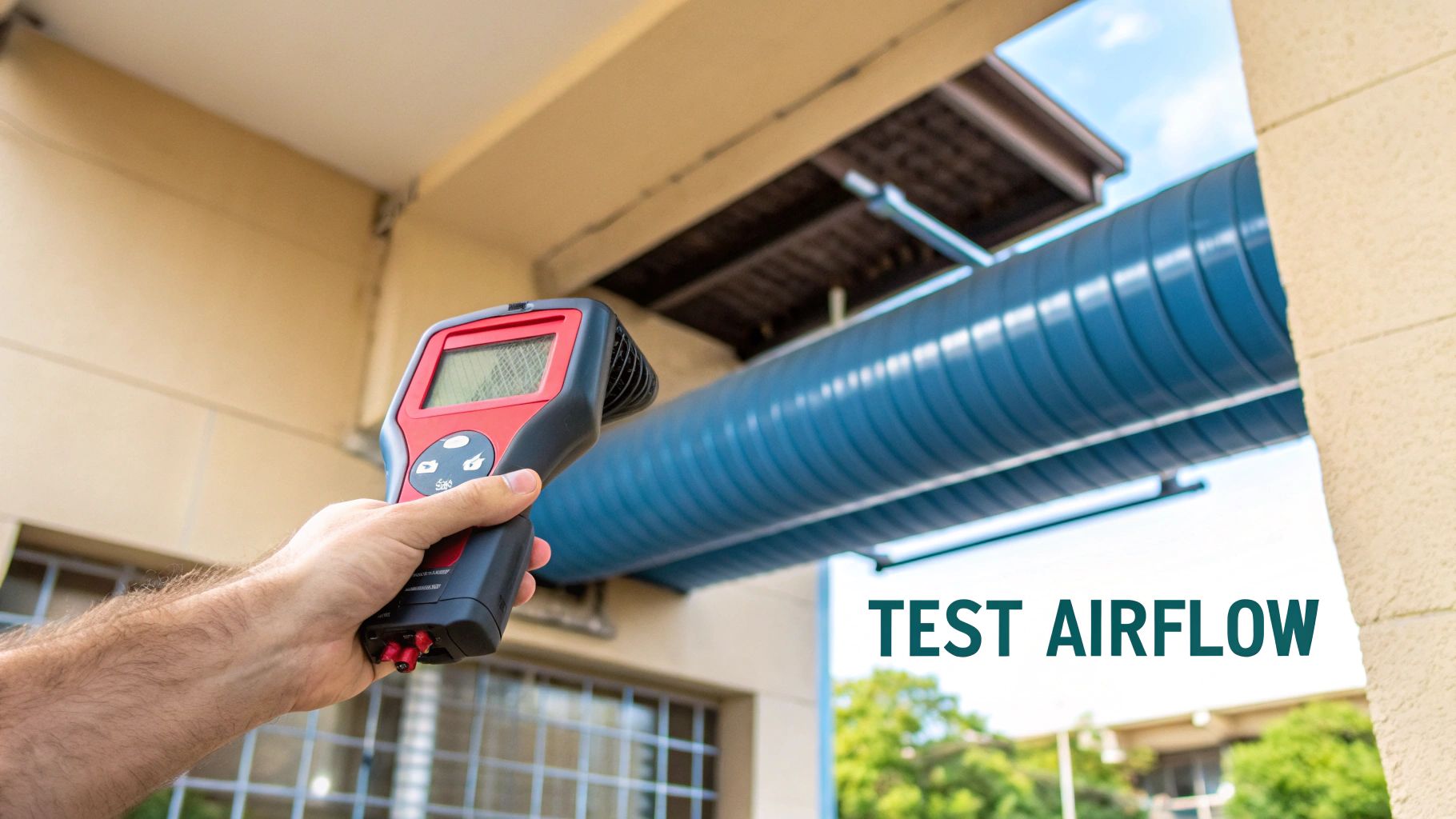
Inspecting these parts involves checking connections for tightness and corrosion, measuring voltage and amperage, and testing safety controls. A failing motor is often one of the most expensive single-component repairs in an HVAC system, making proactive maintenance a critical cost-saving measure. This step in your HVAC preventive maintenance checklist prevents electrical failures, protects the unit's most valuable components, and ensures overall system integrity.
Why It's a Top Priority
An electrical fault isn't just an inconvenience; it can be a serious safety hazard. Overheating components or frayed wires can create a fire risk, while a malfunctioning safety device could lead to catastrophic equipment damage. Regular electrical checks ensure your system operates within its designed electrical parameters, protecting both your property and your expensive equipment from sudden failure. It helps identify minor issues, like a worn contactor, before they can cause a major component like the compressor to fail.
Practical Tips for Electrical Maintenance
While a qualified technician should perform most electrical work, you can stay vigilant with these tips:
- Listen for Unusual Noises: Pay attention to humming, buzzing, or clicking sounds coming from your indoor or outdoor units, as these can indicate an electrical issue.
- Check for Blown Fuses: A repeatedly blown fuse is a clear sign of an underlying electrical problem. If you suspect an issue, you can learn how to tell if an AC fuse is blown to help diagnose the problem before calling a professional.
- Keep the Area Clean: Ensure the area around your outdoor unit's electrical disconnect is clear of debris, overgrown vegetation, and moisture to prevent shorts and corrosion.
- Schedule Professional Inspections: Annually, have a certified technician measure motor amperage and voltage, inspect and tighten all electrical connections, and test capacitors and relays to ensure they are within specification.
5. Refrigerant System Maintenance
Proper refrigerant levels and system integrity are the lifeblood of your air conditioning system's cooling capabilities. Refrigerant, often known by brand names like Freon, is a specialized compound that absorbs heat from your indoor air and releases it outside. Maintaining the correct charge is crucial; too little or too much can drastically reduce efficiency, cause component damage, and increase energy costs.
Unlike oil in a car, refrigerant is not "used up." If your system is low on refrigerant, it means there is a leak somewhere in the system. Simply adding more without fixing the leak is a temporary, costly, and environmentally irresponsible solution. A qualified technician must locate and repair the leak, then correctly charge the system to factory specifications, a key part of any comprehensive hvac preventive maintenance checklist.
Why It's a Top Priority
An improperly charged system forces the compressor to work overtime, leading to premature failure, which is one of the most expensive HVAC repairs. Furthermore, refrigerant leaks release potent greenhouse gases into the atmosphere. Regulations like the EPA's Section 608 mandate proper handling and record-keeping to minimize environmental impact. For homeowners and businesses, this translates to avoiding potential fines and ensuring your system operates both efficiently and responsibly.
Practical Tips for Refrigerant Maintenance
Since handling refrigerant requires specialized tools and EPA certification, this is a job for professionals. However, you can be an informed consumer by understanding the process:
- Ask for a Leak Search: If a technician suggests adding refrigerant, always insist on a leak detection service first. Modern methods include electronic "sniffers," ultraviolet dye, and ultrasonic detectors to pinpoint the source.
- Keep Detailed Service Records: Maintain a log of all HVAC service, especially any refrigerant additions. This history helps technicians diagnose recurring problems and demonstrates compliance.
- Understand Superheat and Subcooling: These are precise measurements a technician takes to confirm the refrigerant charge is perfect. Don't be afraid to ask your technician if they performed these checks to verify the system's performance.
- Consider Upgrades: If you have an older system using R-22 refrigerant (which is being phased out), a significant leak might be the catalyst to upgrade to a newer, more efficient, and environmentally friendly system using R-410A or another modern alternative.
6. Control System Calibration and Testing
The "brain" of your HVAC system is its control system, which includes thermostats, sensors, and actuators. Regular calibration and testing ensure this brain is giving and receiving accurate commands, which is essential for optimal performance and energy efficiency. When controls are miscalibrated, your system might run longer than needed or fail to maintain a comfortable temperature, leading directly to wasted energy and unnecessary wear.
This process involves verifying that temperature and pressure sensors are reading correctly, testing that control sequences (like when your heat turns on) are functioning as programmed, and ensuring all components communicate effectively. For businesses and large properties, this also includes checking the building automation system (BAS) that manages the entire facility's climate.
Why It's a Top Priority
An uncalibrated control system can silently sabotage your energy bills and comfort. A thermostat that is off by just a few degrees can cause the system to run excessively, leading to significant energy waste over time. For commercial properties, companies like Johnson Controls and Siemens have shown that optimizing control systems can reduce energy costs by up to 25%, a testament to the importance of accurate system management. This task is a key part of any comprehensive hvac preventive maintenance checklist.
Practical Tips for Control System Maintenance
To keep your HVAC controls accurate and efficient, incorporate these steps into your maintenance routine:
- Document Everything: Maintain a detailed log of all control sequences and temperature setpoints. This documentation is invaluable for troubleshooting and for any future technicians working on the system.
- Perform Regular Sensor Calibration: Use certified instruments to verify the accuracy of your thermostat and other critical sensors annually. This is especially important in commercial settings where precise temperature control is required.
- Test Control Sequences: Periodically run your system through its heating, cooling, and ventilation cycles to confirm it starts, stops, and modulates correctly according to your settings.
- Keep Software Updated: If you have a smart thermostat or a building automation system, ensure the software is up-to-date. However, always test changes in a controlled manner to avoid unexpected operational issues.
7. Ductwork and Airflow Testing
Often overlooked, the ductwork is the circulatory system of your HVAC unit, delivering conditioned air throughout your property. A comprehensive HVAC preventive maintenance checklist must include ductwork and airflow testing to ensure this critical network is functioning efficiently. Leaks, blockages, or poor insulation in your ducts can silently waste a significant portion of your energy budget and undermine your comfort.
This process involves inspecting the integrity of the ducts, verifying proper insulation, and measuring airflow to ensure it is balanced and distributed correctly. Problems like disconnected joints or crushed sections in attics or crawlspaces are common culprits that force your system to run longer to achieve the desired temperature, leading to premature wear and tear on major components.
Why It's a Top Priority
According to ENERGY STAR, a typical home can lose 20 to 30 percent of the air that moves through the duct system due to leaks, holes, and poor connections. This is like trying to fill a bucket with a hole in it; you lose a substantial amount before it ever reaches its destination. Sealing and insulating ducts can dramatically improve system efficiency, lower energy bills, and correct uncomfortable hot or cold spots in your home or business.
Practical Tips for Ductwork Maintenance
To ensure your ductwork is supporting, not hindering, your HVAC system, integrate these practices into your maintenance plan:
- Visual Inspection: Regularly check visible ductwork in areas like basements, attics, and crawlspaces for obvious tears, disconnected joints, or signs of rodent damage. Look for streaks of dust near seams, which often indicate an air leak.
- Verify Damper Operation: If your system has zone dampers, ensure they open and close fully as intended. A stuck damper can completely block airflow to a part of your property, creating significant comfort issues.
- Check Insulation Integrity: Examine the insulation around your ducts. Compressed, wet, or missing insulation reduces its effectiveness, leading to energy loss as air travels from the main unit to the vents.
- Professional Testing: For a precise assessment, consider professional tools like a duct blaster test, which pressurizes the system to accurately measure air leakage. Beyond testing and minor adjustments, consider engaging professional furnace and duct cleaning services for comprehensive maintenance of your system's airways.
7-Point HVAC Maintenance Checklist Comparison
| Maintenance Task | Implementation Complexity 🔄 | Resource Requirements 💡 | Expected Outcomes 📊 | Ideal Use Cases 💡 | Key Advantages ⭐ |
|---|---|---|---|---|---|
| Air Filter Replacement and Inspection | Low 🔄 – Simple task for in-house staff | Low 💡 – Basic tools and spare filters needed | Moderate 📊 – Improves air quality, reduces energy costs | General buildings, healthcare, manufacturing | Cost-effective, improves airflow and health ⭐ |
| Coil Cleaning and Inspection | Medium 🔄 – Requires trained techs and equipment | Medium 💡 – Specialized cleaning tools | High 📊 – Efficiency boost 10-40%, reduces coil damage | Retail, data centers, schools | Extends coil life, prevents contamination ⭐ |
| Belt and Pulley System Maintenance | Low to Medium 🔄 – Requires experience for tensioning | Low 💡 – Basic tools and spare belts | Moderate 📊 – Prevents failures, improves energy efficiency | Manufacturing, offices, malls | Low-cost, reduces downtime, easy to maintain ⭐ |
| Motor and Electrical Component Inspection | High 🔄 – Requires qualified electricians | High 💡 – Testing equipment and electrical expertise | High 📊 – Avoids costly motor failures and electrical hazards | Hospitals, industrial, commercial buildings | Prevents failures, improves safety and efficiency ⭐ |
| Refrigerant System Maintenance | High 🔄 – Requires EPA-certified techs | High 💡 – Specialized tools, refrigerant handling | High 📊 – Maintains cooling efficiency and regulatory compliance | Grocery stores, offices, data centers | Prevents failures, ensures compliance and reliability ⭐ |
| Control System Calibration and Testing | High 🔄 – Needs specialized control system knowledge | Medium to High 💡 – Calibration tools and software | High 📊 – Saves 10-30% energy, improves comfort | Universities, hospitals, smart buildings | Optimizes energy use, reduces manual intervention ⭐ |
| Ductwork and Airflow Testing | High 🔄 – Requires specialized equipment and access | Medium to High 💡 – Testing devices and contractors | High 📊 – Energy savings 15-30%, improves airflow distribution | Schools, retail, hospitals | Identifies leaks, improves comfort and efficiency ⭐ |
Partner with the Pros for Year-Round Peace of Mind
Navigating the complexities of HVAC care can feel overwhelming, but this detailed hvac preventive maintenance checklist empowers you to take control. We've walked through the essential tasks that form the backbone of a healthy system, from the simple yet crucial monthly air filter replacement to the more technical annual inspections of electrical components and refrigerant levels. Each step, whether performed monthly, seasonally, or annually, is a direct investment in your property's comfort, efficiency, and long-term value.
By consistently addressing these key areas, you're not just preventing unexpected breakdowns; you're actively optimizing performance. Clean coils ensure maximum heat exchange, properly tensioned belts prevent motor strain, and calibrated controls guarantee your system operates exactly as intended. These aren't just minor tweaks; they are the actions that lead to lower energy bills, improved indoor air quality, and a significantly extended lifespan for your HVAC unit.
From Checklist to Action: The Value of Expert Partnership
While this guide provides a clear roadmap, the distinction between DIY tasks and professional service is critical. Changing a filter is one thing; safely handling refrigerant or testing high-voltage electrical connections is another entirely. This is where the true value of a professional partnership comes into play. For homeowners and business owners in Palm Beach County, where the heat and humidity place constant demand on cooling systems, proactive expert care is not a luxury, it is a necessity.
Attempting complex maintenance without the right training or tools can lead to:
- Safety Hazards: Risk of electrical shock or improper handling of chemical refrigerants.
- Costly Mistakes: A small miscalibration can cause cascading damage to expensive components like the compressor or motor.
- Voided Warranties: Many manufacturers require proof of professional maintenance to keep warranties valid.
Key Takeaway: An hvac preventive maintenance checklist is your guide, but a certified technician is your guarantee. They possess the diagnostic equipment, specialized knowledge, and hands-on experience to spot subtle issues before they escalate into catastrophic failures, ensuring every component works in perfect harmony.
Secure Your Comfort with Professional Maintenance
Ultimately, the goal is peace of mind. It’s the confidence of knowing your system will keep you cool during a Boca Raton heatwave and your business comfortable for customers in Delray Beach. By embracing a structured maintenance routine and partnering with a trusted professional, you transform your HVAC system from a potential liability into a reliable asset. You move from a reactive state of fixing problems to a proactive state of preventing them, ensuring consistent comfort and predictable costs year after year.
Ready to take the guesswork out of your HVAC care? The certified technicians at Florida Cooling Group specialize in comprehensive maintenance plans that cover every item on this hvac preventive maintenance checklist and more. Visit Florida Cooling Group or call us today to schedule your service and ensure your system is in expert hands.
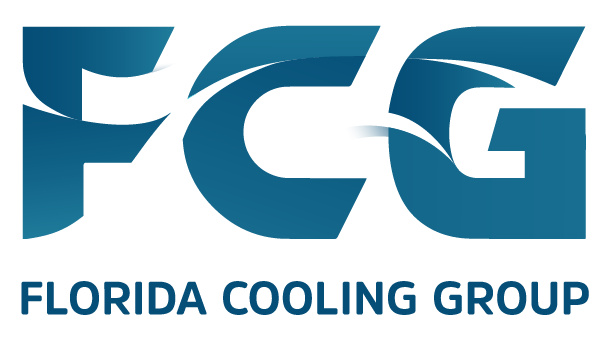
 (561) 400-2205
(561) 400-2205